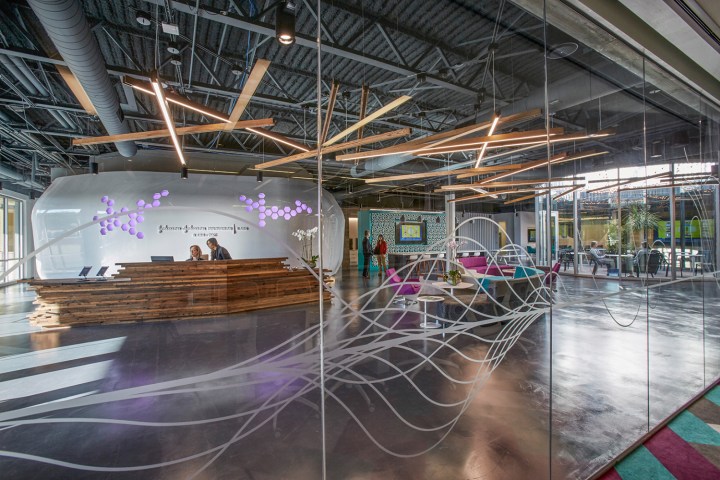
The path that led Melinda Richter, a tech innovation professional, to the medical world started with her in a hospital bed in Beijing, with high fevers and expecting to die. She was suffering from myocarditis, an inflammation of the heart muscle, and meningitis, another type of infection that attacks brain and spinal cord membranes. It turned out she had contracted scrub typhus, a zoonotic disease transmitted through the bites of little mites found in shrubs in some parts of Asia, but diagnosis and treatment took too long to arrive.

“My immune system was shot and the prognosis was that I was not going to make it,” Richter recalled. She was struck by the irony of the situation. “Just the day before, I was programming how to order a soda from a vending machine with a cell phone, and today no one could tell me why I was so sick — the basic human health care was absent.”
Richter decided that if she lived she would switch her focus to medical innovations and help new medicines and health technologies arrive to market faster, and with less friction. She survived — so she pursued this idea with a vengeance.
A long and expensive process
Historically, innovating in the medical realm was a hard job that took a long time. Unlike the information technology field, where a crew of coders with a computer and a few thousand dollars can sometimes build a new software or an app within months, the health care industry is a different story. Innovators in the medical world need sophisticated lab equipment, chemical reagents, electronic microscopes, and often access to live cultures that must be grown and stored under precise conditions.
With these requirements, even a simple proof of concept can cost hundreds of thousands of dollars. And if the idea works in the lab, it typically must be tested on animal models and then in human trials. To accomplish that, researchers have to wade through a gamut of regulatory procedures and navigate a complex Food and Drug Administration (FDA) approval process that can take years. And while doing all this, the inventors still need to pay rent and buy food, or care for their families.
Unlike IT, historically, innovating in the medical realm was a hard job that took a long time.
Richter realized how hard it was bringing medical innovations to market. She also saw what the obstacles were: the lack of the necessary research infrastructure, the problem of raising capital, and the potential risks that turned investors away.
“If you give two guys two computers and two years, they go on to create the likes of Google and Yahoo — and the risk is very low,” Richter said. “In life sciences it takes two years or more to raise capital to get the infrastructure, the permits, and then takes 8 to 12 years and a billion dollars to get a drug to market. And you are never sure you’re going to make it.” All that creates essentially a void in the medical innovation realm.
And it’s that inefficiency that JLABS is trying to fix.
Creation of JLABS to aide medical startups
Richter decided to fill the void and create that missing innovative space. She approached the pharmaceutical company Johnson & Johnson with the idea of giving promising startups a place to test out their ideas and the goal of speeding up the process of bringing new therapeutics to the patients who desperately need them. The concept was dubbed JLABS and Richter launched it in 2012, becoming the global head of Johnson & Johnson Innovation.
Six years later, JLABS had opened in nine cities, including San Diego, Toronto, and New York, and signed up over 400 companies to pursue their medical innovations within its facilities. The model proved extremely successful as it helped many companies find investors, navigate the approval process, and launch their ideas.
“Over 80 percent of them are still in business,” said Kate Merton, who heads the recently opened JLABS in New York. “For startups in biotech it’s an unparalleled number.”
“Over 80 percent of [companies signed with JLABS] are still in business.”
One of JLABS early signees, Arcturus Therapeutics quickly raised two-billion dollars worth of deals to devise and pioneer treatments for genetic diseases caused by RNA malfunctions — rare but debilitating problems. RNA, which stands for ribonucleic acid, is found in all living cells, and acts as a messenger carrying instructions from DNA to control the synthesis of proteins in our bodies.
When formed incorrectly, these instructions generate dysfunctional proteins, causing incurable diseases, such as cystic fibroids, muscular dystrophies and others. For example, in cystic fibrosis, an often-fatal disease that affects over 70,000 people worldwide, a malfunctioning transporter protein causes a build-up of phlegm in the lungs, which interferes with breathing.

Unlike with regular medicines or vitamins, injecting new, functioning RNAs into bloodstream doesn’t work — the RNA molecules get destroyed. So Arcturus founder Joe Payne and his colleagues devised a better way. They deliver healthy RNAs enveloped in protective shells via a special aerosol spray, so patients simply inhale them. But taking this novel and complex drug delivery method from an idea to a company, was far from straightforward, so joining JLABS was a game-changer, Payne said.
“JLABS was the ideal fit for us because it helped us accelerate the path of innovation, which takes a long time for new startups,” Payne explained. “Months later we had a proof-of-concept and then were able to raise money, and we had two-billion dollars worth of deals.”
Valuable mentorship
JLABS helps in more ways than simply offering lab equipment. It also provides community to bounce off ideas, and a mentor called JPAL — typically a seasoned colleague within Johnson & Johnson, to help young budding companies navigate the complex and challenging FDA approval process and other logistics.
One very important thing is JLAB’s policy of “no strings attached,” meaning that JLABS and Johnson & Johnson do not ask for the rights.
This mentorship can be crucial to success, according to Maria Pineda and Martin Akerman, two partners at Envisagenics, another innovative company newly coming onboard with JLABS. Envisagenics plans to use artificial intelligence to predict how newly designed drugs would work within the human body and whether they may have side effects or not. Pineda and Akerman plan to do this by integrating different biological information together — such as genomic info, drug data, and other facts — and mimicking the drug performance on the computer.
“In the old-school pharmaceutical company, we would try one drug at a time and then test it, but it takes a couple of billion dollars and time, two decades,” Pineda said. “But we are going to do this much faster because kids with genetic disorder and cancer patients can’t wait 20 years.”
That’s where the JPAL feature becomes particularly important, Akerman said. “The legal mentorship is what you need to succeed.”
One very important thing is JLAB’s policy of “no strings attached,” meaning that JLABS and Johnson & Johnson do not ask for the rights to any of the innovations that may come out of the facilities. It is entirely up to the young companies to decide if at the end, they want Johnson & Johnson as a partner company. Some of them may chose to partner up, but they are also free to go on their own or with other partners. It’s done specifically to not stymie the young company’s chances but rather speed up bringing their therapeutics to consumers.
“Johnson & Johnson decided we didn’t want to limit the ingenuity of our entrepreneurs, so we use a ‘no strings attached policy,’” said Merton of JLABS New York. It’s also the right things to do from the patients’ perspective, she added.
“We are enabling the entrepreneurs to get the right therapies for the unmet needs as quickly as possible.”






